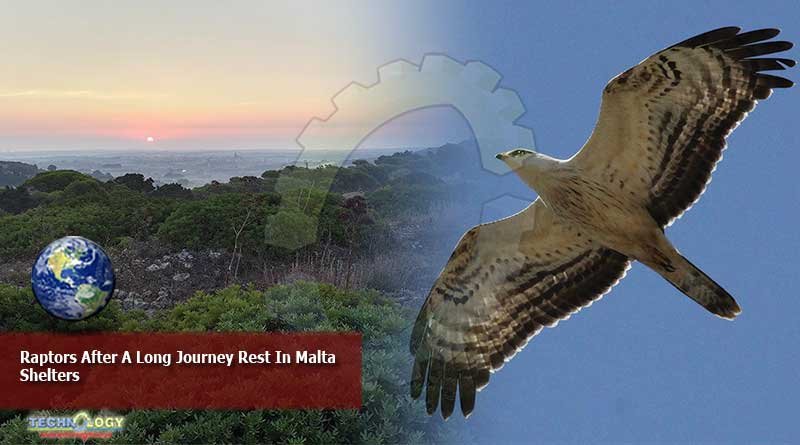After a long, tiring journey, Raptors find a place to spend the oncoming night. The place is Buskett, Malta.

A large, broad-winged bird soaring high among the clouds suddenly folds its wings and drops out of the sky. Like a stone, it hurtles down towards the trees and disappears into the thick foliage. After a long, tiring journey, the honey buzzard has at last found a place to spend the oncoming night. The month is September; the time is 6.30pm; the place is Buskett, Malta.
As raptors undertake a perilous journey thousands of kilometres long from summer to winter quarters, few would imagine that the Maltese islands provide the perfect staging post for such migrating raptors.
During autumn, raptors leave their breeding grounds in Europe to migrate south to their wintering grounds in Africa. Since the Maltese islands are halfway between Europe and Africa, they are an ideal stopover for a number of raptors that do not like to fly over large bodies of water without a short break in between.
Since many broad-winged raptor species hesitate or refuse to cross bodies of water, bird of prey migration bottlenecks occur in areas that allow migrants to forego or reduce the lengths of extensive flights over water.
Water avoidance in the Europe-Africa migration system is best seen at places such as the Strait of Gibraltar at the western end of the Mediterranean, the Bosphorus (Istanbul) in the east Mediterranean, and the Strait of Messina (between Sicily and Italy) in the central Mediterranean, where thousands of raptors together with other soaring birds (like storks) annually converge both during the spring and autumn migration.
Some of those raptors taking the central route during autumn make it to the Maltese islands after following the east and southeast coast of Sicily. This provides Maltese birdwatchers with a unique spectacle in the sky, which peaks in the month of September.
Although raptors can be seen from anywhere in the Maltese islands, ranging from urban areas such as over our towns and villages to the coast where raptors can be seen arriving offshore, places such as Buskett and the areas surrounding it offer the added opportunity of being the last wooded area prior to them leaving our islands to continue on their southerly migration to Tunisia and Libya before continuing their migration further south in Africa.
From Buskett alone, a total of 2,000-4,000 raptors are observed annually in the afternoons
Raptors congregate in the Buskett area in the afternoon and a number of them decide to spend the night in Malta and will actually roost in the trees. Seen from the air, Buskett appears as one tiny oasis of lush vegetation, promising cool shade and shelter amid a desert of stone buildings for the raptors.
From Buskett alone, a total of 2,000-4,000 raptors are observed annually in the afternoons, from the middle of August until the end of October. These dates constitute the autumn migration period for raptors in the Maltese islands.
The number of raptors that migrate over the entire islands during this period is obviously higher than the quantity recorded from the Buskett watch point as some migrate over other areas such as over Gozo and other areas in Malta, while others migrate in the morning and are thus not seen in the afternoon.
Although raptors can be seen at any time of the day, numbers increase considerably from midday onwards once the air warms up and thermal currents form over the Maltese islands, making it ideal for raptor migration. Although some raptors can actually migrate during the night, most birds arriving late in the afternoon tend to call it a day and roost here in Malta.
Raptor migration also depends on weather conditions. The ideal weather conditions are clear or partly cloudy skies with a light southwesterly wind. The migration technique that raptors use normally carries them 25-50km per hour, the difference in speed being related to the wind direction and strength. Understandably a tail wind gives a greater speed than a contrary wind.
The article is originally published at Times of Malta.
